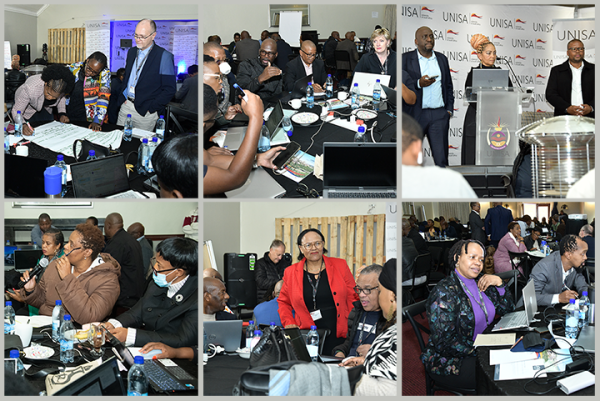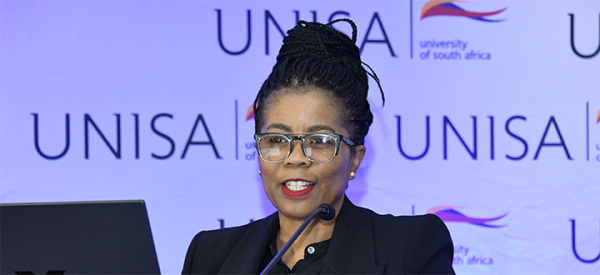
Unisa’s management corps gathered from 10 to 12 April 2025 at the Principal and Vice-Chancellor’s Management Lekgotla. This bi-annual event allows the university’s management to reflect on the university’s progress, and consider how lessons from the past can be aligned to improve the institution’s academic offering to a new generation of students.

Painting the picture: Unisa’s portfolio managers engaged in a SWOT analysis of the university’s strategic pillars and their alignment with the catalytic niche areas
Heads of portfolios, college leadership, the university’s management committee and extended management provided an overview of their progress towards bolstering the university’s strategic pillars. Also under discussion was progress on aligning and realising the Unisa 2030 Strategy, and the gains made since the introduction of the catalytic niche areas – highly specialised areas of study mandated by Professor Puleng LenkaBula, the Principal and Vice-Chancellor (VC), to be supported and reflected in the university’s core units.
The core pillars
In her welcome address, the VC stated that the Lekgotla is a critical opportunity to reflect on and reassess the university’s progress toward realising its vision for a new generation of students, assess deliverables and achievements, and reflect on challenges and opportunities in order to ensure the provision of high-quality education which is in alignment with the best teaching and learning standards, benchmarked against local and global practices.
Continuing, the VC outlined the university’s five strategic pillars:
Recognising the challenges of transitioning from secondary to tertiary education, the VC acknowledged that the university’s new cohort of students are fresh from matric, and therefore require extra support and orientation tailored to the unique needs at undergraduate level when studying in an open, distance and e-learning environment.

Unisa Principal and Vice-Chancellor, Professor Puleng LenkaBula
The catalytic niche areas are revolutionising the university’s focus on teaching and learning for the next 150 years and require constant readjustment and realignment. The university’s portfolio heads were deeply involved in strategic discussions focused on transforming these areas into concrete and attainable objectives. In addition to broadening the university's national and international scope, the catalytic niche areas are set to expand the university's academic offering significantly and provide greater benefits for the new generation of students.
Concluding, the VC stated that over the three days of the Lekgotla, the university’s management will be examining both internal and external realities – what is working, and what needs to be improved in order for the university’s offering to adapt to continuously volatile circumstances reshaped by geopolitics and socio-economic conditions.
Some of the topics that management discussed included:
Throughout the programme, the university’s management synergistically engaged in these topics and expanded on their realisation, while ensuring that the students remain beneficiaries of these discussions.
Wrapping up day one of the Lekgotla, facilitators, comprising Professor Moloko Sepota, Acting Registrar, Professor Tennyson Mgutshini, Executive Dean: College of Graduate Studies, and various heads of portfolios, engaged on enrolment trends and growth areas, South African Qualifications Authority (SAQA) issues for the enrolment of African students, attrition rates, non-admission of qualifying students, and strategies to grow master’s and doctoral enrolments.
* By Godfrey Madibane, Acting Journalist, Department of Institutional Advancement
** Photography by Shooheima Champion, Multimedia Centre
Publish date: 2025-04-15 00:00:00.0